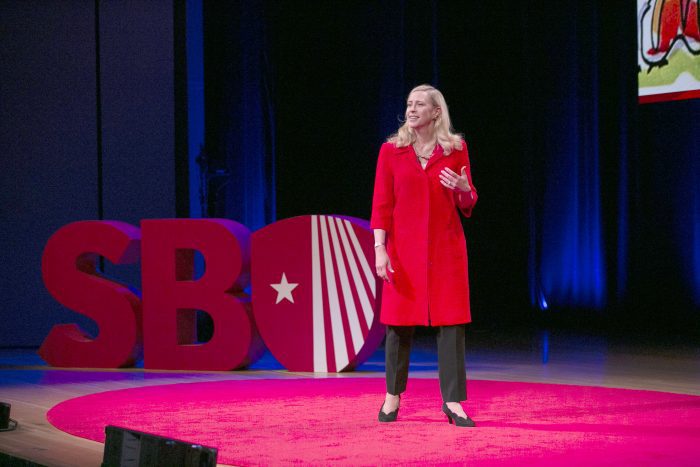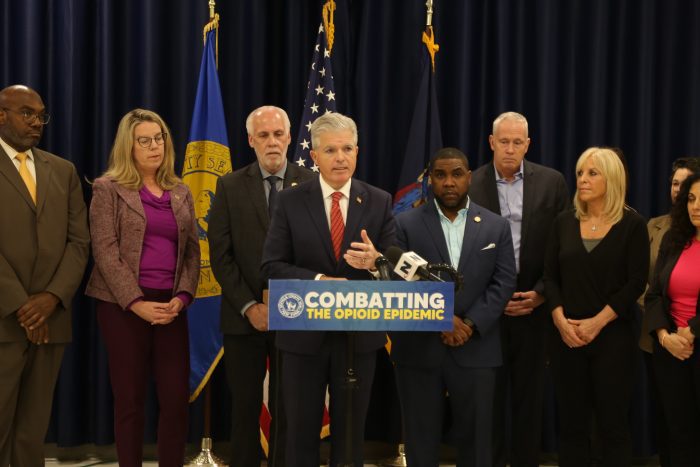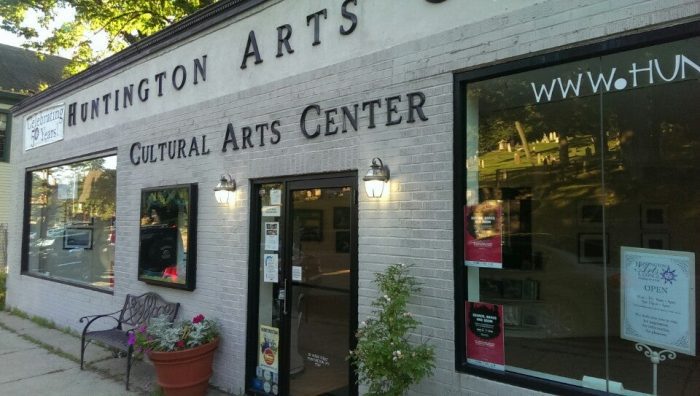By Neil Mehta
Over 75 local businesses and organizations engaged with students in grades seven through 12 at Ward Melville High School’s 5th annual career fair Jan. 18. The event, organized by the Three Village Industry Advisory Board, was attended by more than 550 individuals.
Ilene Littman, WMHS business teacher and 3V-IAB coordinator, said the event was held to provide students with “real-world connections, networking opportunities with businesses, and a period to talk to businesses and find out what careers would be most appropriate for them.”
Kevin Scanlon, Three Village Central School District superintendent, said that the goal of the program was to “expose students to some of these opportunities now, before they go off to college.”
Before the event, students completed a personality assessment to determine their Holland code, a system that connects an individual’s personality traits to compatible career paths, Littman said. Businesses were located in the gymnasium at color-coded tables corresponding to each of the six Holland codes, allowing students to find employers from compatible industries.
Several business and organization representatives at the fair noted that they were impressed with the quality of conversation and preparation by student attendees.
Lisa Owens, program manager at regional food bank Long Island Cares, attended the fair to introduce high schoolers to careers in the nonprofit sector
“A lot of students aren’t familiar with nonprofit agencies in general,” she said. “Most of them want to go into corporate careers.”
Vinny Constantino, cardiovascular technologist at Mather Hospital, said he attended the fair to expand student awareness of medical careers beyond work as a doctor or nurse.
“I didn’t know about this career path in high school,” Constantino said. “I never knew there was such a thing as a technologist or what that job entails. I thought it would be nice to let people know that this is an avenue you can pursue.”
According to Scanlon, the school district is in the process of developing its business education program through curricular and experiential learning opportunities.
Previously, the district was home to eight business teachers at Ward Melville High school, a figure that decreased to only two, Scanlon said. Now, the school has increased again to three teachers and plans to continue expanding.
Outside of the classroom, the district offers a work-based learning program and hosts 3V-IAB, which brings together students, parents, community members, administration and staff together to plan events such as the career fair.
Michael Ardolino, 3V-IAB chair and owner/broker at Realty Connect USA, said that in addition to hosting programs, the advisory board improves engagement between students and employers by gathering businesses’ feedback regarding students’ preparation for the workforce.
Littman and Scanlon both emphasized that students should keep open minds as they continue navigating potential career paths, with Littman noting that “approximately 65% of jobs that kids in sixth grade will have aren’t even established yet.”
“Kids are going to change their jobs multiple times before they retire,” Scanlon added. “They need to be open to that and be flexible to those opportunities.”


































